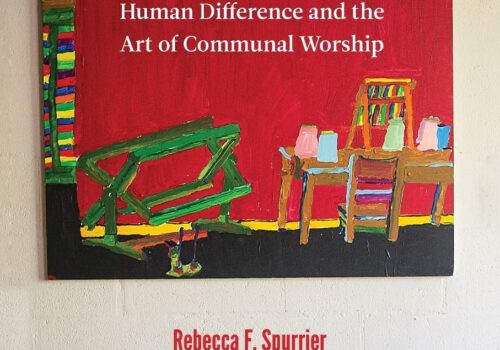Download PDF: RV Ottoman Medicine
By Miri Shefer-Mossensohn
Albany: SUNY Press, 2009. 277 pages. $26.95.
Miri Shefer-Mossensohn’s book Ottoman Medicine: Healing and Medical Institutions 1500-1700 provides thorough and unique access to an understudied aspect of early modern Middle Eastern social history. Works covering the Ottoman period are of special interest due to the enormous importance of this particular state in the affairs of the early modern Middle East, and analyses of social history in this period are both important and badly needed. Shefer-Mossensohn’s book steps into this role with an impressive command of relevant sources and keen analytical insight, making this work a fascinating contribution to the study of the early modern Middle Eastern and Muslim world.
Shefer-Mossensohn’s work comprehensively analyzes the Ottoman tradition and systematization of medical practices during this crucial period in the cultural development of the Empire and its territories. Shefer-Mossensohn distinguishes between three interrelated, though often conflicting, strands of Ottoman medical practice: popular folk medicine; religious or “Prophetic” medicine, based on the sayings and traditions of the Prophet Muhammad; and the elite “mechanistic” science of medicine based on the Galenic tradition of humoralism. The latter’s role in Ottoman hospitals and medical discourse forms a particularly important and interesting part of the work, due primarily to the fact that as an elite tradition sanctioned by the professional Ottoman medical community, this tradition enjoyed a high level of clinical and institutional status in the Empire. Methodologically, Shefer-Mossensohn’s work analyzes Ottoman medicine and its attendant definitions of health and sickness as socially situated products of the unique cultural and urban dimensions of the Ottoman Empire. Shefer-Mossensohn pays particular attention to the “integrative” tendency of Ottoman medicine, noting in detail the extent to which Ottoman hospitals and medical practitioners subscribed to an integrated view of the human body, its environment, and the curative, preventative, and therapeutic processes.
The book’s structure aims at a rather “integralistic” analysis, not unlike the clinical nature of Ottoman medicine itself. Shefer-Mossensohn argues throughout that Ottoman medicine, in contrast to contemporary Western forms of medical practice, took seriously the notion of the human body as an integrated system that was deeply connected to the physical world around it. This motif is one of the core insights of the work, and it also forms the backbone to the structure of the analysis. Shefer-Mossensohn’s first two chapters attempt to answer the concrete questions of Ottoman medical practice, such as how medicine was administered, what types of procedures were used, and how these procedures were meted out in relation to social and economic status. At every point in the healing process, the integrated nature of a person’s physical, spiritual, and environmental conditions were emphasized in Ottoman medicine. The third chapter addresses how medical institutions were constructed and maintained in this society and the major role of charitable institutions and activities in this process. The final chapter of the book analyzes the actual urban location of Ottoman medical institutions and what this tells us about Ottoman perceptions of disease and wellness. The book closes with a discussion of what exactly made Ottoman medicine peculiarly Ottoman and the degree to which the system was seen as successful to those it was designed to serve.
This work paints a rather vast portrait of a complex subject, and this comprises both the strength and possible weakness of the overall argument of the book. Shefer-Mossensohn’s insights into the theoretical assumptions of Ottoman medicine, for instance, provide an extremely effective analytical principle for what was a vast system of beliefs and practices that spanned two centuries; yet, it is at times unclear to what degree these insights were universally valid throughout the vast and diverse territories of the Ottoman Empire. Shefer-Mossensohn’s insights, however, remain strong and indispensable, despite the naturally unwieldy nature of so large a topic. One dimension of Shefer-Mossensohn’s analysis is especially fascinating: the historical and cultural connections and mutual influences between Ottoman and Western European medical thought. Shefer-Mossensohn’s analysis of the Galenic basis of Ottoman medicine demonstrates a fact known to specialists in the Muslim world but often unknown or surprising to those outside this field: the extent to which medieval Muslim culture relied on the heritage of Greek antiquity. The Galenic nature of Ottoman medical practice is but one example of this phenomenon, and the formative influences and uses of classical Greek learning can be found in virtually every field of learning in the Muslim middle ages and early modern period, much like the situation in Western Europe during the same period.
Shefer-Mossensohn’s work does a great service to both specialists and non-specialists by highlighting this reality. The influence of antiquity was so strong in the Ottoman system that it remained under the sway of the classical etiological theory of vapors rather than accepting a theory of contagion to explain the spread of disease (though, as Shefer-Mossensohn notes, there was a general level of awareness of the phenomenon). Second, Shefer-Mossensohn thoroughly analyzes numerous fascinating accounts of shared medical knowledge and influence between Western European and Middle Eastern cultures, noting both their shared and divergent paths. While medieval European physicians were deeply influenced by the writings of Ibn Sina, medical texts used in the Ottoman world show evidence of influence by Western European advances in medicine; for instance, the seventeenth century work of Shams al-Din Itaki utilized the anatomical work of sixteenth century Western European scholars such as Andreas Vesalius and Juan de Valverde. Shefer-Mossensohn’s book features numerous other invaluable insights into the complex social reality of Ottoman society, and for this reason it is highly recommended to anyone interested in the social and cultural history of the late medieval and early modern Muslim world.




